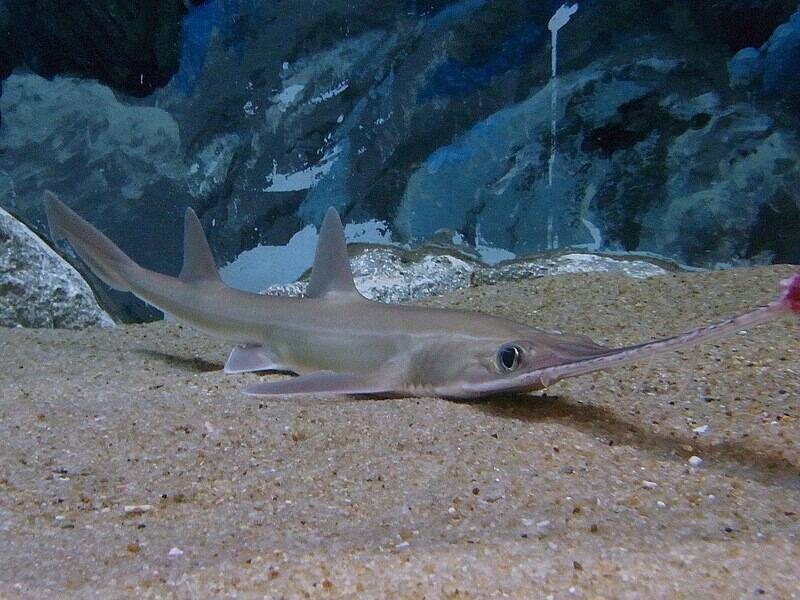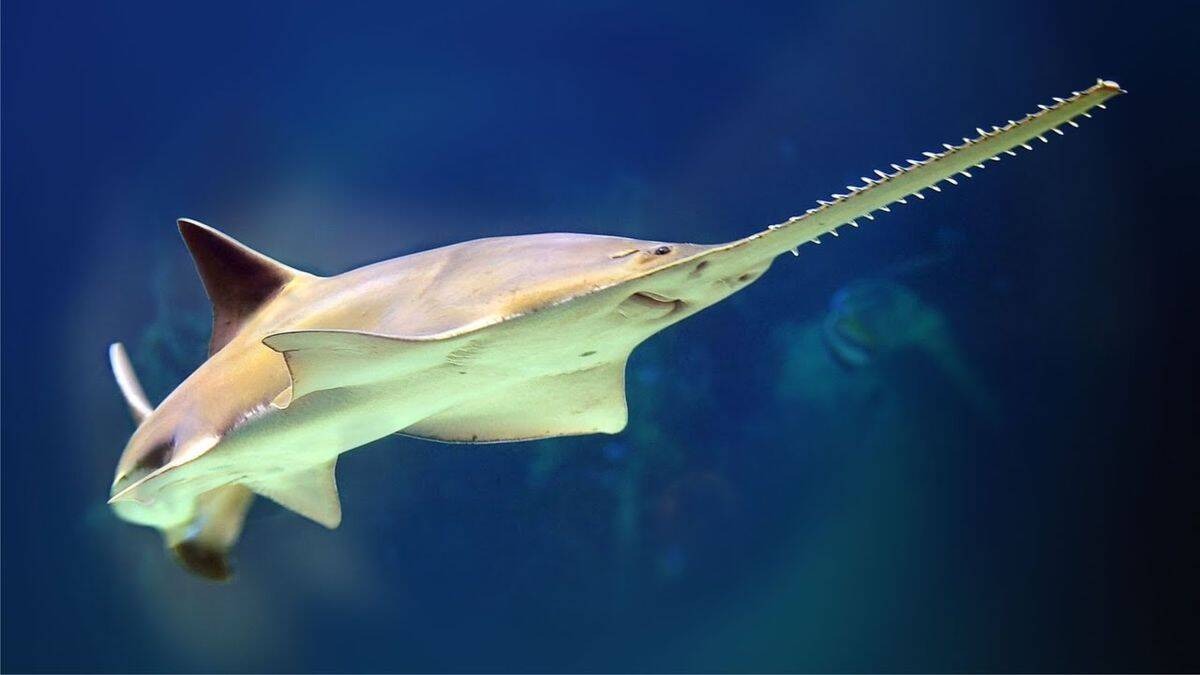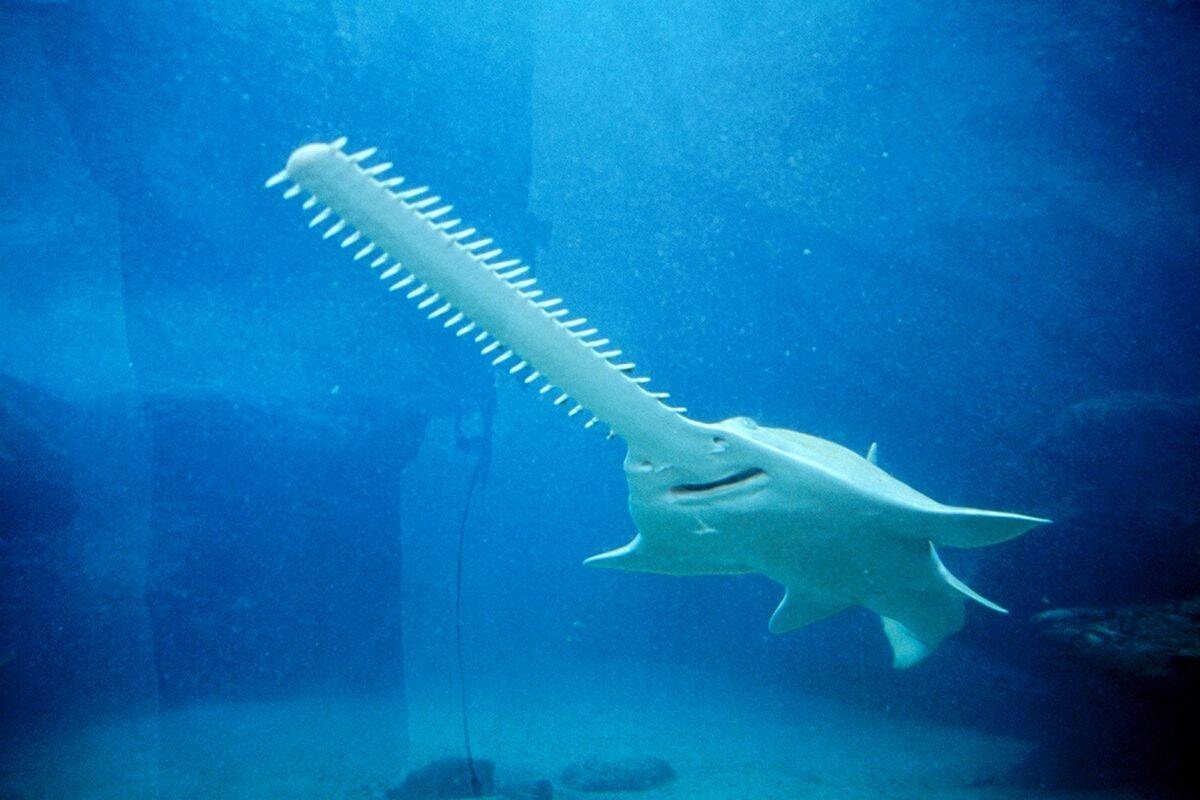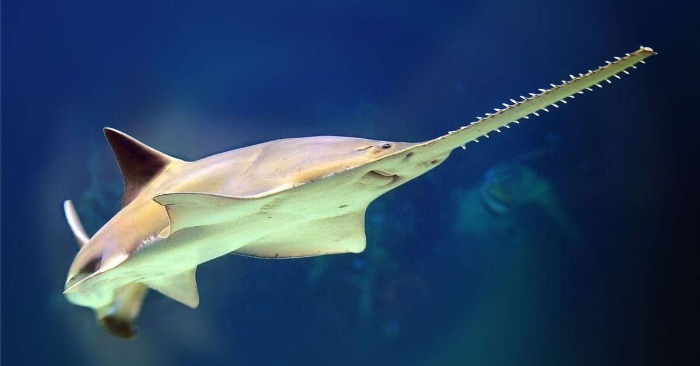“A chainsaw for a nose? These fish aren’t playing around” 😳🦈 They look like underwater monsters — but their bizarre faces hide high-tech secrets of survival. See the freaky snouts and what they really do in the article below 👇📸
You may remember seeing pictures or cartoons of strange ocean creatures with long, saw-shaped noses. They almost look like someone merged a fish with a power tool. But in the world of nature, features like these don’t just appear for no reason — they serve a purpose. So, what’s the deal with fish that have saws on their faces?
Interestingly, there isn’t just one type of saw-nosed fish — there are actually two very different species with similar-looking snouts, and they aren’t even closely related!
Meet the Sawsharks — Ancient Predators of the Deep
These sharp-snouted fish have been swimming through Earth’s oceans since the time of the dinosaurs — nearly 140 million years ago. Today, they can be found in various ocean zones, usually growing up to about 1.7 meters (5.5 feet) long. They primarily feed on shellfish, small fish, and crustaceans. And that strange-looking saw? It’s not for show — it’s a serious weapon used for hunting and survival.

And Then There’s the Sawfish — Bigger, Stronger, and Just as Weird
Sawfish are often mistaken for sharks, but they’re actually more closely related to rays. These giants of the sea have been around for around 60 million years and can grow up to 7 meters (23 feet) long. Found in warm, tropical waters, their snout — officially called a rostrum — isn’t just a jagged extension of their head. It’s a high-tech multi-purpose tool, honed by evolution.
So, What’s the Saw For?
Both sawsharks and sawfish use their saw-like snouts in two key ways:
As a weapon: In murky waters, the fish can swing their saws like clubs to strike and stun prey. This makes hunting quick and efficient. And when it comes to defending themselves, a swipe of that sharp nose can be enough to send predators swimming in the opposite direction.

As a sensor: The most fascinating feature of all is what’s happening beneath the surface. The teeth on the rostrum don’t just slice — they sense. These fish produce faint electrical signals, and the teeth on their saws act like sensitive antennas that detect tiny disturbances in the electric field of the water.
Nature’s Built-In Sonar
This special sensing ability allows these fish to:
Detect prey in total darkness
Navigate through murky water where vision fails
Locate crabs, mollusks, and other hiding creatures buried in the sand

It’s essentially a built-in radar system — nature’s version of sonar, but even more advanced.
So while these saw-nosed fish may look strange, every tooth and edge serves a powerful purpose. Their rostrum acts as both a hunting tool and a navigation system, proving once again that in nature, even the weirdest designs have brilliant functions.







